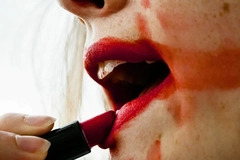Long-arm of COVID-19 stretches to the skin, exacerbated by vitamin D deficiency, review finds

16 Mar 2023 --- COVID-19 has cast a long shadow, beyond its well-known respiratory complications, to lesser-known skin conditions stemming from the virus’s presence in the body, according to an academic review published in the Multidisciplinary Digital Publishing Institute (MDPI). While the population slowly forgets about the virus, a few insidious remnants persist and plague people who have contracted it.
People of Black, Asian and minority ethnic origins (BAME) are more prone to COVID-19 infection due to vitamin D deficiency. People with lighter skin phototypes, such as Caucasians, have been found to have a significantly higher chance of developing cutaneous manifestations. Skin barrier damage and irritation may also occur because of excessive use of personal protective equipment and alcohol-based sanitizers.
A few of these lesser-known symptoms include redness of the skin, chilblain-like effects, hives or urticaria rash, water blisters or net-like red-blue patterns on the skin, which could leave lesions on the skin. The symptoms are connected to skin phototypes and vitamin D deficiency.
Cellular attack
Studies have shown that the COVID-19 virus attacks human cells by targeting angiotensin-converting enzyme-2 (ACE-2). ACE-2 is abundantly expressed in keratinocytes, the epidermis and the dermis, which are mainly responsible for COVID-induced skin manifestations.
The ACE-2 enzyme is not restricted to a specific part of the skin because it is expressed in sweat glands and other body tissues. In the case of skin-related disorders, the deteriorated skin is the entry point creating an opportunity to penetrate other areas of the skin. People of BAME ethnicity are more prone to COVID-19 infection due to vitamin D deficiency, according to the review in MDPI.
People of BAME ethnicity are more prone to COVID-19 infection due to vitamin D deficiency, according to the review in MDPI.
The review titled “The Pandemic and Your Skin—Direct and Indirect Impact of COVID-19” compiled information from 46 articles surveying 998 patients from nine countries. Chilblain-like lesions were reported in 40% of the experiment population, 23% maculopapular lesions, 9% urticarial lesions, 6% vesicular lesions, 3% livedoid and necrotic lesions and 20% rashes and unidentified manifestations.
Immune response indicated
While the exact mechanism of the skin manifestations is still unknown, the researchers hypothesize that the immune response and microvascular injury are potentially responsible.
Children often remain asymptomatic with negative COVID-19 tests at the initial cutaneous manifestation, and the appearance of lesions is attributed to a possible late indication of the infection.
Although vitamin D may play a role in the skin-related symptoms of COVID-19, significant levels were not detected during the infection period. Further research is needed to investigate the link between the two.
Meanwhile, the impact of COVID-19 left its mark across fiscal 2022 in the personal care sector, prolonging a challenging business environment.
The COVID-19 pandemic has also taken a heavy toll on the beauty sector in South Korea, according to a literature review, showing that the online market has grown increasingly active. Traditional face-to-face shopping is diminishing and sales decreased due to the decline in consumer sentiment.
By Inga de Jong












